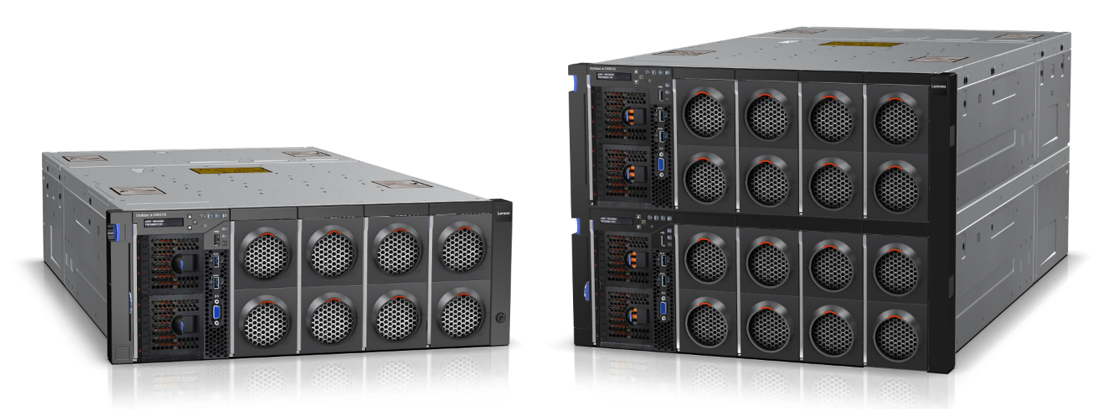Abstract
Each data center workload differs in terms of its compute, memory and scalability requirements. Determining what server is best for supporting a given workload can be a challenge. This article provides a simple guide showing what workloads are best suited for higher-end four-socket and above servers.
Introduction
Trying to select the right server to support your Enterprise workloads can be challenging. Business leaders are looking for business return on their investment; however, they are typically ambivalent about the technology to make this happen. IT leaders are chartered with delivering the actual workload within budget and at a certain service level agreement to their internal customers.
Each workload has a different set of technical requirements. Workloads vary from very basic file-and-print, (which put minimal demands on the server) to high end in-memory databases that push the limits of server capabilities. Matching the optimal server to a given workload can be challenging. Business leaders and IT leaders need a guideline to help them choose the right server for the right workload.
Workload Requirements
A good way to differentiate and look at workloads is by their computing requirements and memory & processor scalability. The following figure positions different workloads by these two metrics.

Figure 1. Workloads on X6 servers
Compute requirements: Fast transaction speeds and accelerated operations mean real-time responsiveness, quick results, and increased productivity. Fast computing allows you to handle today’s unprecedented growth in data volumes and improve the accuracy and precision of workloads that require high performance.
Memory and processor scalability: Scalability allows a system to expand to meet increasing performance and sizing workload demands. Memory scaling refers to how much memory you can add to your server. Processor scaling is how many and the types of processors you can add to your server. Enterprises need assurance that the architecture is designed in such a way that system capacity can be increased as the needs of the business change.
Lenovo X6 Sample Workloads
Here are some typical workloads that demand the performance and scalability of X6 servers :
- Simulation: Workloads such as simulations that reproduce the behavior of a system, such as Computer Aided Engineering CAE) and Computational Fluid Dynamics (CFD)
- Machine Learning: Algorithms to solve complex problems like image searches and pattern recognition
- In-Memory DB: This type of database primarily relies on large amounts of main memory for fast data access.
- Business Intelligence: Computer software solutions that enable a company or organization to gain insight into its critical operations via reporting applications and analysis tools
- Big Data/Business Analytics: The discovery and communication of meaningful patterns in data. BD/BA relies on the simultaneous application of statistics, computer programming and operations research to quantify performance
- ERP: Enterprise Resource Planning is business management software—typically a suite of integrated applications that an organization can use to collect, store, manage, and interpret data from many business activities (e.g., SAP).
- OLTP: Online Transaction Processing is a class of information systems that facilitate and manage transaction-oriented applications, typically for data entry and retrieval transaction processing.
- Energy: Workloads involved with finding, extracting and analysis of energy (petroleum, gas, electrical, nuclear, wind, solar, etc.). An example is analysis of seismic data when exploring for energy.
- CRM: Customer Relationship Management is an approach to managing a company’s interaction with current and future customers. It involves using technology to organize, automate, and synchronize sales, marketing, customer service and technical support (e.g., Salesforce.com).
- Data Warehousing (DW): A system used for reporting and data analysis. DWs are central repositories of integrated data from one or more disparate sources.
- Virtualization Consolidation: Consolidating multiple single workload servers into one (or at least many fewer) “virtualized” servers.
- High Frequency Trading: A type of algorithmic trading - characterized by high speeds, high turnover rates, and high order-to-trade ratios - that leverages high-frequency financial data and electronic trading tools.
The goal of categorizing these workloads is to show that there are different types of workloads that have different infrastructure and system requirements. Every workload has unique requirements, so decision makers need to make sure the underlying infrastructure is optimized for that workload.
Lenovo x3850 X6 and x3950 X6
The Lenovo X6 servers are the high end of Lenovo’s server portfolio. The x3850 X6 is a 4U rack server scalable to four processors. The x3950 X6 is an 8U rack server scalable to eight processors. These X6 servers have many advantages over other servers.

Figure 2. Lenovo x3850 X6 and x3950 X6 servers
Lenovo X6 servers deliver exceptionally fast application performance. Equipped with the new Intel Xeon processor E7-4800 v4 and E7-8800 v4 processors, the x3850 X6 and x3950 X6 servers can deliver up to 6 TB or 12 TB of memory and 96 or 192 cores of processing power, respectively. Armed with these capabilities, you can host essential mission-critical applications, implement large and many virtual machines, or run sizeable in-memory databases without compromises in performance, capacity, or scalability. The X6 servers have held, and continue to hold, numerous #1 performance benchmarks across the industry.
Further reading
For more information, see these resources
About the author
Randall Lundin is the Mission Critical Product Manager in Lenovo Infrastructure Solutions Group. His responsibilities include managing and planning Lenovo’s 4-socket and 8-socket servers.
Related product families
Product families related to this document are the following:
Trademarks
Lenovo and the Lenovo logo are trademarks or registered trademarks of Lenovo in the United States, other countries, or both. A current list of Lenovo trademarks is available on the Web at https://www.lenovo.com/us/en/legal/copytrade/.
The following terms are trademarks of Lenovo in the United States, other countries, or both:
Lenovo®
The following terms are trademarks of other companies:
Intel®, the Intel logo and Xeon® are trademarks of Intel Corporation or its subsidiaries.
Other company, product, or service names may be trademarks or service marks of others.
